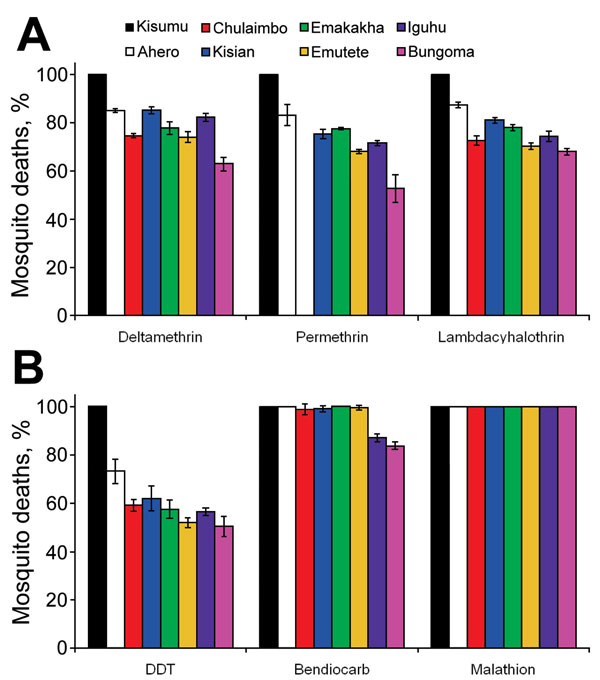Volume 21, Number 12—December 2015
Dispatch
Pyrethroid and DDT Resistance and Organophosphate Susceptibility among Anopheles spp. Mosquitoes, Western Kenya
Figure 2

Figure 2. Anopheles gambiae sensu lato mortality rates associated with various insecticides and study sites, western Kenya. A) Mortality rates associated with pyrethroid insecticides deltamethrin, permethrin, and lambdacyhalothrin. In Chulaimbo, permethrin was not tested because of a lack of mosquitoes. B) Mortality rates associated with DDT (organochlorine), bendiocarb (carbamate), and malathion (organophosphate). The susceptible Kisumu strain at Kenya Medical Research Institute was used as a control. Error bars indicate 95% CIs.
Page created: November 17, 2015
Page updated: November 17, 2015
Page reviewed: November 17, 2015
The conclusions, findings, and opinions expressed by authors contributing to this journal do not necessarily reflect the official position of the U.S. Department of Health and Human Services, the Public Health Service, the Centers for Disease Control and Prevention, or the authors' affiliated institutions. Use of trade names is for identification only and does not imply endorsement by any of the groups named above.